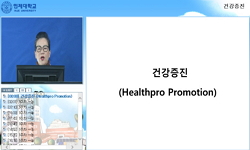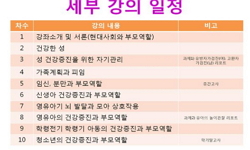Objectives: The purpose of this study was to explore preschool children's physical activity level and their mother's physical activity promotion behaviors. Methods: Physical activity level of preschool children were measured with self report from moth...
http://chineseinput.net/에서 pinyin(병음)방식으로 중국어를 변환할 수 있습니다.
변환된 중국어를 복사하여 사용하시면 됩니다.
- 中文 을 입력하시려면 zhongwen을 입력하시고 space를누르시면됩니다.
- 北京 을 입력하시려면 beijing을 입력하시고 space를 누르시면 됩니다.

학령전기 아동의 신체활동 수준과 어머니의 신체활동 증진행위 = Physical Activity Level of Preschool Children and Their Mothers' Behaviors Promoting Children's Physical Activity
한글로보기https://www.riss.kr/link?id=A103712612
- 저자
- 발행기관
- 학술지명
- 권호사항
-
발행연도
2013
-
작성언어
Korean
- 주제어
-
등재정보
KCI등재
-
자료형태
학술저널
- 발행기관 URL
-
수록면
173-183(11쪽)
-
KCI 피인용횟수
4
- DOI식별코드
- 제공처
-
0
상세조회 -
0
다운로드
부가정보
다국어 초록 (Multilingual Abstract)
Objectives: The purpose of this study was to explore preschool children's physical activity level and their mother's physical activity promotion behaviors.
Methods: Physical activity level of preschool children were measured with self report from mothers and were evaluated based on the physical activity guideline of National Association for Sports and Physical Education. Mothers' physical activity promotion behaviors for their children were measured using the questionnaire developed by McMinn et al. A total of 172 questionnaires from the mothers in Seoul and Daejeon were used for data analysis.
Results: Mean of structured physical activity time of the preschool children was 37.88 minutes per day and 61% of them had inappropriate level of physical activity. Mean of sedentary behavior time was 137.21 minutes per day. Most of the children (93%) spent longer sedentary behavior time than the guideline. Mothers with preschool children showed moderate level of physical activity promotion behaviors for their children; mean scores of 12.92 out of 25 for physical activity support and 10.13out of 25 for physical activity permission, and a mean score 14.66 out of 25 for sedentary behavior limiting. Correlations between mothers' physical activity support and increasing of structured physical activity (r=0.165, p=0.05) and decreasing of sedentary behaviors (r=-0.298, p<0.001) were statistically significant, but not strong.
Conclusions: Preschool children need to increase physical activity and reduce sedentary behaviors. Family focused physical activity program for preschool children could be necessary including parental education for improving parental support to increase physical activity level of preschool children.
참고문헌 (Reference)
1 McMinn AM, "Validation of a maternal questionnaire on correlates of physical activity in preschool children" 6 : 81-92, 2009
2 Kelly LA, "Tracking physical activity and sedentary hehavior in young children" 19 : 51-60, 2007
3 Tucker P, "The physical activity levels of preschool -aged children: A systematic review" 23 (23): 547-558, 2008
4 Lustig RH, "The neuroendocrinology of obesity" 30 : 765-785, 2001
5 Start Active Stay Active, "Start Active, Stay, Active: a report on physical activity for health from the four home countries' chief medical officer" United Kingdom 2011
6 Eriksson J, "Size at birth, childhood growth and obesity in adult life" 25 : 735-740, 2001
7 Fisher A, "Seasonality in physical activity and sedentary behavior in young children" 17 : 31-40, 2005
8 Ou SW, "Search for criterion of obesity through analysis of morbidity and mortality in Korean obesity" 11 : 304-, 2002
9 Novilla ML, "Public health perspectives on the family: an ecological approach to promoting health in the family and community" 29 (29): 28-42, 2006
10 Carver A, "Playing it safe: The influence of neighbourhood safety on children's physical activity-A review" 14 : 217-227, 2008
1 McMinn AM, "Validation of a maternal questionnaire on correlates of physical activity in preschool children" 6 : 81-92, 2009
2 Kelly LA, "Tracking physical activity and sedentary hehavior in young children" 19 : 51-60, 2007
3 Tucker P, "The physical activity levels of preschool -aged children: A systematic review" 23 (23): 547-558, 2008
4 Lustig RH, "The neuroendocrinology of obesity" 30 : 765-785, 2001
5 Start Active Stay Active, "Start Active, Stay, Active: a report on physical activity for health from the four home countries' chief medical officer" United Kingdom 2011
6 Eriksson J, "Size at birth, childhood growth and obesity in adult life" 25 : 735-740, 2001
7 Fisher A, "Seasonality in physical activity and sedentary behavior in young children" 17 : 31-40, 2005
8 Ou SW, "Search for criterion of obesity through analysis of morbidity and mortality in Korean obesity" 11 : 304-, 2002
9 Novilla ML, "Public health perspectives on the family: an ecological approach to promoting health in the family and community" 29 (29): 28-42, 2006
10 Carver A, "Playing it safe: The influence of neighbourhood safety on children's physical activity-A review" 14 : 217-227, 2008
11 Reilly JJ., "Physical activity, sedentary behavior and energy balance in preschool: Opportunities for early obesity prevention" 67 : 317-325, 2008
12 Goldfield GS, "Physical activity promotion in the preschool years: A critical period to intervene" 9 : 1326-1342, 2012
13 Timmons BW, "Physical activity for preschool children-how much and how?" 98 (98): S122-S134, 2007
14 Lopez-Dicastillo O, "Parents’ contrasting views on diet versus activity of children: Implications for health promotion and obesity prevention" 78 : 117-123, 2010
15 Dwyer J, "Parents report intrapersonal, interpersonal, and environmental barriers to supporting healthy eating and physical activity among their preschoolers" 33 : 338-346, 2008
16 Boufous S, "Parental safety concerns-a barrier to sport and physical activity in children?" 28 : 482-486, 2004
17 Loprinzi PD, "Parental influences on physical activity behavior in preschool children" 50 : 129-133, 2010
18 Dowda M, "Parental and environmental correlates of physical activity of children attending preschool" 165 : 939-944, 2011
19 Oliver M, "Parent influences on preschoolers' objectively assessed physical activity" 13 : 403-409, 2010
20 Vaughn K, "Parent education key to beating early childhood obesity" 32 : 37-41, 2007
21 Swallen K, "Overweight, obesity, and health-related quality of life among adolescents: The national longitudinal study of adolescents health" 115 : 340-347, 2005
22 Reilly JJ, "Objective measurement of physical activity and sedentary behavior: review with new data" 93 : 614-619, 2008
23 Ministry of Health & Welfare, "Korea Health Statistics 2010: Korea National Health and Nutrition Examination Survey" Ministry of Health & Welfare 2011
24 Williams CL, "Increasing physical activity in preschool: A pilot study to evaluate animal tracker" 41 : 47-52, 2009
25 Luttikhuis HGMO, "How do parents of 4 to 5 year old children perceive the weight of their children?" 99 : 263-267, 2010
26 United States Department of Health and Human Services, "Healthy People 2010" Government Printing Office 2010
27 Erdfelder E, "G POWER: A general power analysis program" 28 : 1-11, 1996
28 Active Healthy Kids Canada, "Don't let this be the most physical activity our kids get after school: Active Healthy Kids Canada Report on Physical Activity for Children and Youth" Active Healthy Kids Canada 2011
29 Manios Y, "Design and descriptive results of the Growth, exercise, and nutrition epidemiological study in preschoolers : The genesis study" 6 : 32-40, 2006
30 De Craemer M, "Correlates of energy balance-related behaviours in preschool children: a systematic review" 13 (13): 13-28, 2012
31 The Canadian Society for Exercise Physiology, "Canadian physical activity guideline for the early years (aged 0-4 years)" Timmons BW 37 : 345-356, 2012
32 "Active start: A statement of physical activity guidelines for children from birth to age 5" AAHPERD Publication 2009
33 The Korea Pediatric Society, "2007 Growth Chart for Children and Adolescents" Korea Centers for Disease Control and Prevention 2007
동일학술지(권/호) 다른 논문
-
- 한국모자보건학회
- 오은주
- 2013
- KCI등재
-
한국어판 소아당뇨환자의 삶의 질 측정 도구 (PedsQLTM 3.0)의 신뢰도 및 타당도
- 한국모자보건학회
- 한송희
- 2013
- KCI등재
-
학령기 아동의 스트레스, 스트레스 대처행동, 우울과 공격성과의 관계
- 한국모자보건학회
- 전미숙
- 2013
- KCI등재
-
산후조리원 이용 산모와 이용하지 않는 산모의 산후우울, 산후 스트레스, 산후 불편감 및 산후 활동에 대한 비교연구
- 한국모자보건학회
- 김민아
- 2013
- KCI등재
분석정보
인용정보 인용지수 설명보기
학술지 이력
| 연월일 | 이력구분 | 이력상세 | 등재구분 |
|---|---|---|---|
| 2027 | 평가예정 | 재인증평가 신청대상 (재인증) | |
| 2021-01-01 | 평가 | 등재학술지 유지 (재인증) |  |
| 2018-01-01 | 평가 | 등재학술지 선정 (계속평가) |  |
| 2017-12-01 | 평가 | 등재후보로 하락 (계속평가) |  |
| 2013-01-01 | 평가 | 등재 1차 FAIL (등재유지) |  |
| 2010-01-01 | 평가 | 등재학술지 유지 (등재유지) |  |
| 2008-01-01 | 평가 | 등재학술지 유지 (등재유지) |  |
| 2005-01-01 | 평가 | 등재학술지 선정 (등재후보2차) |  |
| 2004-01-01 | 평가 | 등재후보 1차 PASS (등재후보1차) |  |
| 2002-07-01 | 평가 | 등재후보학술지 선정 (신규평가) |  |
학술지 인용정보
| 기준연도 | WOS-KCI 통합IF(2년) | KCIF(2년) | KCIF(3년) |
|---|---|---|---|
| 2016 | 0.59 | 0.59 | 0.7 |
| KCIF(4년) | KCIF(5년) | 중심성지수(3년) | 즉시성지수 |
| 0.77 | 0.77 | 1.035 | 0.1 |





 KCI
KCI KISS
KISS






